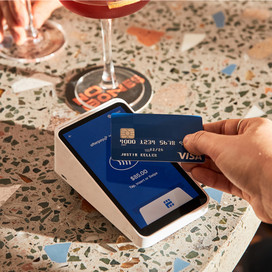Table of contents
Dynamic pricing isn’t new. Even if the term is unfamiliar, you may have experienced dynamic pricing when booking a flight or a hotel. An airline seat or a hotel room might cost you more on a weekend, over a holiday or for a premium experience. As a restaurateur you may already use this strategy without having planned for it. Happy hour specials, market price menu items and children’s discounts are all common examples of dynamic pricing. These types of dynamic pricing are not always updated in real time, but they can be.
Restaurants use dynamic pricing, in part, to grapple with the elasticity of demand. For example, restaurateurs might use it to optimise revenue by increasing prices when demand is up (during peak periods) or by decreasing prices to draw customers in when demand is down (during off-peak times).
In fact, the Square Future of Restaurants report found that 29% of restaurateurs are considering raising prices in the next year to weather
economic headwinds. 83% percent of consumers agreed that given the impact of inflation and the rising costs of goods, they would understand if their favourite local business raised prices. With the flexibility of adjusting pricing to accommodate market conditions and customer needs, now may be the perfect time to explore dynamic pricing as a strategy for your restaurant.
What is dynamic pricing?
Dynamic pricing is a way for businesses to adjust prices for their goods or services based on market demands. This pricing strategy is also referred to as surge pricing, demand pricing, value-based pricing or time-based pricing. It does not mean you are simply raising prices; you might move them up or down. As a business owner, you may consider dynamic pricing if there is higher customer interest or if supply is limited.
Here are four common dynamic pricing strategies and what they look like in action:
Surge pricing: Surge pricing can go into effect when there is a high demand, charging an additional surge amount on top of the upfront fee. You may experience surge pricing at a particularly busy time when taking an Uber.
Demand pricing: Demand pricing calculates the price based on demand for a product or service. It can increase or decrease. For example, a theme park may have pricing tiers for peak and off-peak seasons.
Value-based pricing: Value-based pricing is set on presumed value of a good or service. This might apply to popular seasonal items such as a specialty latte or a limited-edition runners. The value of the item or service determines the pricing.
Time-based pricing: Time-based pricing is tied to timing, such as with a Black Friday sale or a public holiday sale.
Many restaurants have the flexibility to adjust their pricing as needed. Typically, they also have perishable inventory, which means there’s an additional incentive to have flexible pricing when necessary. But reflecting those changes may mean redesigning or reprinting signage and menus in a time- and cost-inefficient way.
Restaurants have a fixed capacity, so keeping tables filled with guests is the ultimate goal. With this in mind, it’s critical to remember that while a dynamic pricing strategy might be typically used for surge pricing, you can use it as an opportunity to fill seats or sell excessive inventory. During peak times, you might feature high-profit margin items and optimise your sales rather than charge higher prices across the board.
Consider your restaurant’s approach
In addition to using dynamic pricing based on demand, restaurants can use it to create a sense of excitement and urgency among diners who want a great deal.
If you are a Square seller, there are several ways you might use dynamic pricing to adjust your prices quickly. Your Square Dashboard is a great first stop to get familiar with your business’ data, so you can experiment with dynamic pricing. From here, you can pull real-time reports on which products or services sell the best, on when your funds are transferred and on customers’ insights, such as how often your customers return.
Once you identify patterns through these reports, consider these Square tools to help you leverage dynamic pricing in different channels:
- Square Customer Directory and Square Marketing allow you to see critical data about your customers. You can use this data to offer special pricing based on customer loyalty, geographic proximity or purchasing history.
- If you use Square Online, you can set different shipping rates for customers. Shipping rates can make a big impact on your cash flow, especially during times when many customers are ordering. Consider your strategy around shipping, so you can be flexible in your options while doing what’s best for your business.
- Square Point of Sale allows you to change menu prices easily. Square for Restaurants allows you to create and customise your menus online and through the Square Point of Sale app. These menus are designed to correspond to your physical menus, and you can customise multiple menus for different types of service, such as brunch, lunch, or dinner.
Restaurants are looking at new ways to thrive in a constantly changing environment. Dynamic pricing gives them the flexibility to ensure that prices fit the demand. If you’re looking to explore dynamic pricing, the most important thing is to be transparent and let customers know when and why you are doing it. Communicate price changes clearly and directly to your customers, as price volatility has dominated the consumer experience in recent years. By implementing this strategy effectively, you can have more control over your bottom line while offering current and prospective customers pricing options that are seen as a value, not an overcharge.
This article is for informational purposes only and does not constitute professional advice. For specific advice applicable to your business, please contact a professional.
![]()











